Are you tired of constantly dealing with oil leaks and engine misfires? The culprit behind these frustrating issues may be your spark plug tube seals. These small but important components play a crucial role in keeping your engine running smoothly, but when worn or damaged, it can lead to many problems.
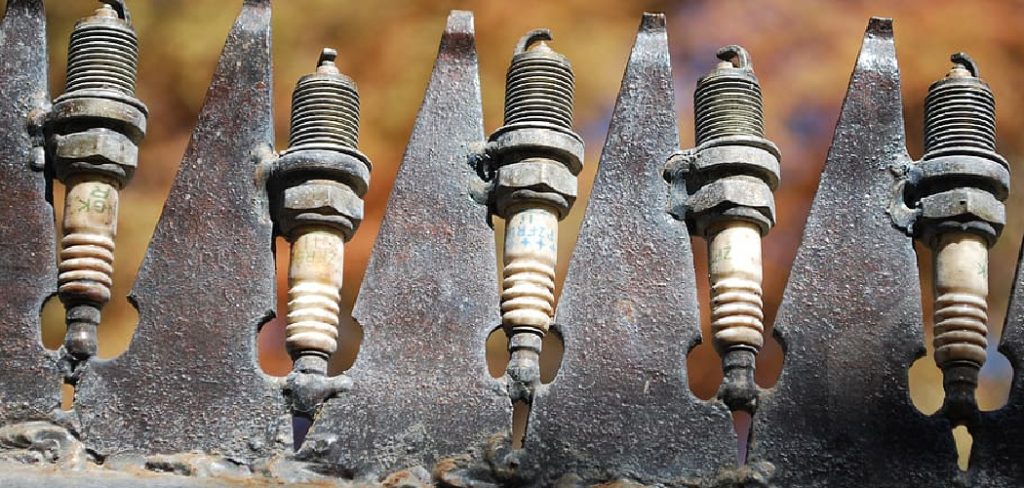
Thankfully, changing spark plug tube seals is a relatively simple task that just about anyone can do with the right tools and know-how. In this blog post, we will guide you through the step-by-step process of replacing these essential seals so you can get back on the road confidently and without any pesky oil leaks or engine hiccups. So let’s dive in and learn how to change spark plug tube seals like a pro!
Tools and Materials You Will Need to Change Spark Plug Tube Seals
- Socket wrench
- Spark plug socket
- Torque wrench (optional)
- Flathead screwdriver
- New spark plug tube seals
- Engine oil (to top off if needed)
Step-by-step Guidelines on How to Change Spark Plug Tube Seals
Step 1: Prepare Your Vehicle
As with any car maintenance task, it’s essential to start with a clean and well-lit work area. Make sure your engine is cool before starting the process, and gather all the necessary tools and materials listed above. It’s also a good idea to have some rags or paper towels on hand for any spills or messes. Preparing your vehicle and work area beforehand will make the process smoother and more efficient.
Step 2: Locate the Spark Plug Tube Seals
Once you have prepared your work area, open the hood of your car and locate the spark plug tube seals. These are small rubber seals that sit on top of each spark plug, sealing it to prevent oil leaks. Depending on your vehicle, you may need to remove the engine cover or other components to access the spark plug tube seals.
Step 3: Remove Old Spark Plug Tube Seals
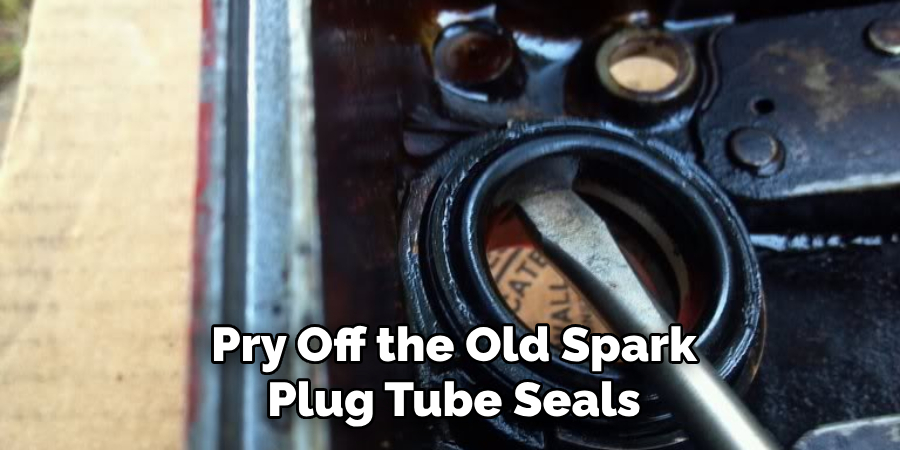
Using a flathead screwdriver, gently pry off the old spark plug tube seals from each spark plug. Be careful not to damage the surrounding area or scratch any surfaces. If the seals are stuck, you may need to wiggle them back and forth or use a small amount of penetrating oil to loosen them. While removing the old seals, it’s essential to keep track of which seal goes with each spark plug as they are not interchangeable.
Step 4: Clean the Spark Plug Area
With the old seals removed, use a clean rag or paper towel to wipe away any debris or oil residue from the spark plug area. It’s crucial to have a clean surface for the new seals to properly seal and prevent future leaks. This is also a good opportunity to inspect the spark plugs for any signs of wear or damage. If necessary, you can replace them at this time as well.
Step 5: Install New Spark Plug Tube Seals
Take your new spark plug tube seals and carefully press them into place on top of each spark plug. Make sure they are snug and properly seated to prevent any oil leaks. It’s also a good idea to put a small amount of engine oil on the seals to help them slide into place easily. Make sure not to use too much oil as this can cause issues with the spark plugs’ performance.
Step 6: Reassemble and Test
Once all new spark plug tube seals are installed, reassemble any components you may have removed to access them. Double-check that everything is securely in place before closing the hood of your car. Start your engine and let it run for a few minutes, then turn it off and check for any oil leaks around the spark plug area. If everything looks good, you have successfully changed your spark plug tube seals!
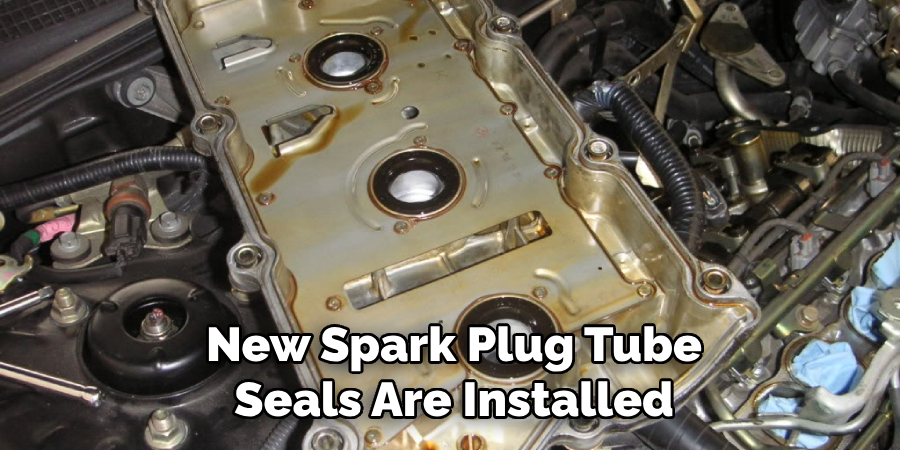
Following these simple steps will help you keep your engine running smoothly and prevent any future issues caused by worn or damaged spark plug tube seals. It’s a relatively quick and easy task that can save you time, money, and frustration in the long run. So next time you notice an oil leak or engine misfire, remember to check your spark plug tube seals and follow this guide to change them like a pro.
Additional Tips and Tricks to Change Spark Plug Tube Seals
1. If you’re having trouble removing the old spark plug tube seals, try using a flathead screwdriver to gently pry them out. Be careful not to scratch or damage the surrounding area.
2. Before installing the new spark plug tube seals, make sure they are clean and free of any debris. This will help ensure a proper seal and prevent any future leaks.
3. If you notice oil buildup around the spark plug tubes, it may be a sign of a larger issue such as worn valve cover gaskets or piston rings. It’s important to address these issues before changing the spark plug tube seals.
4. When installing the new spark plug tube seals, use a small amount of silicone sealant on the outside edge for added protection against leaks.
5. Always refer to the manufacturer’s instructions for torque specifications when tightening the spark plug tube seals. Over-tightening can cause damage and under-tightening can result in leaks.
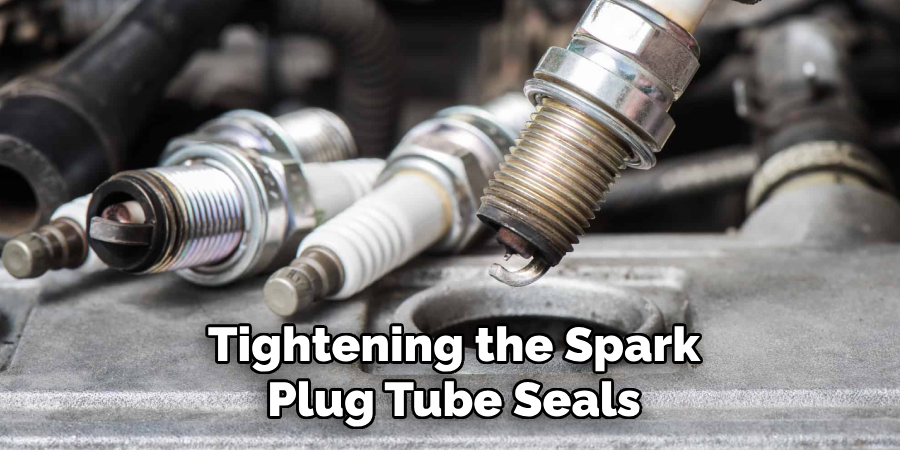
6. If you’re replacing all of the spark plug tube seals, it’s a good idea to also replace the valve cover gaskets at the same time. This will ensure a complete seal and prevent any future leaks.
7. Regularly check and replace damaged or worn spark plug tube seals to prevent oil leaks and maintain optimal engine performance.
8. To help ensure a proper seal, consider using high-quality aftermarket spark plug tube seals instead of generic ones. These may cost more, but they are often made with better materials and have better durability.
9. If you’re working on a car with multiple cylinders, it’s important to keep track of which spark plug tube seal goes where. This will ensure that the correct seal is installed in the corresponding cylinder.
10. When changing spark plug tube seals, it’s also a good idea to inspect the spark plugs themselves and replace them if necessary. Worn or damaged spark plugs can also lead to oil leaks and decreased engine performance.
11. If you’re not confident in your ability to change spark plug tube seals, it’s best to seek the help of a professional mechanic. They have the experience and tools necessary to complete the job correctly and efficiently.
Following these tips and tricks can help make the process of changing spark plug tube seals easier and more effective. By maintaining and replacing these small but important components, you can ensure your engine runs smoothly and efficiently for many miles to come. Always consult your vehicle’s manual for specific instructions and torque specifications, and don’t hesitate to seek professional help if needed. Happy repairing!
Precautions Need to Be Followed for Changing Spark Plug Tube Seals
1. First and foremost, make sure you have the necessary tools and materials for changing spark plug tube seals. This includes a socket wrench, spark plug pliers, new spark plug tube seals (make sure they are compatible with your vehicle), clean rags, and possibly some silicone sealant.
2. Before beginning any work on your vehicle, it’s important to disconnect the battery to prevent any electrical accidents.
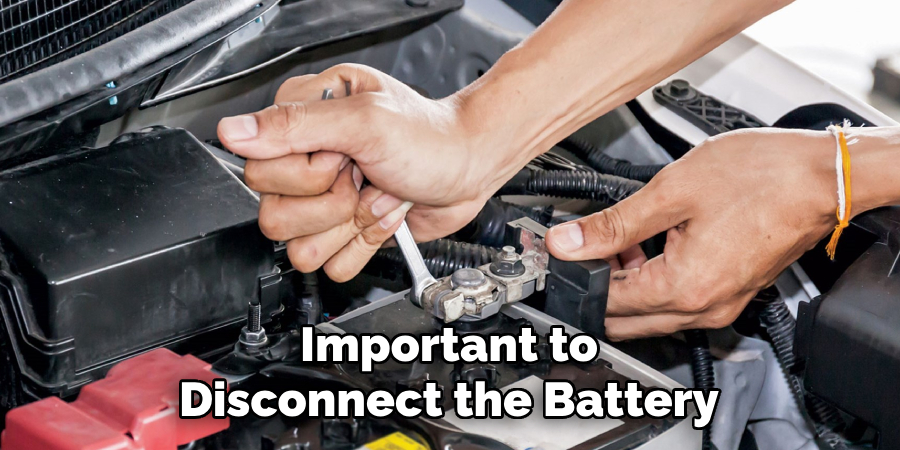
3. Once the battery is disconnected, locate the spark plug tube seals. They are typically located on top of the engine and can be identified by the wires coming out of them.
4. Carefully remove the old spark plug tube seals using a pair of spark plug pliers. Be gentle to avoid any damage to the surrounding components.
5. Thoroughly clean the area where the spark plug tube seals were located. Use a clean rag to wipe away any debris or oil.
6. Take your new spark plug tube seals and apply a thin layer of silicone sealant to the bottom edge. This will help create a tight seal and prevent any oil leaks.
7. Carefully place the new spark plug tube seals into their designated spots. Make sure they are securely in place.
Following these precautions will ensure that the spark plug tube seals are changed successfully and without any complications. It’s important to take your time and be gentle when working on your vehicle’s engine to avoid causing any damage.
Conclusion
Now you know how to change spark plug tube seals, you can confidently tackle this task yourself. While it may seem daunting at first, by following the steps outlined in this guide and taking your time to work carefully and methodically, you will be able to successfully replace your spark plug tube seals without any hassle.
However, if you encounter any difficulties or feel unsure about any step of the process, do not hesitate to seek assistance from a professional mechanic or consult your vehicle’s manual for further guidance. Remember to always prioritize safety and follow proper procedures when working on your vehicle’s engine.

Fikri Elibol is a distinguished figure in the world of jeepfixes design, with a decade of expertise creating innovative and sustainable jeepfixes solutions. His professional focus lies in merging traditional craftsmanship with modern manufacturing techniques, fostering designs that are both practical and environmentally conscious. As the author of Jeepfixes, Fikri Elibol delves into the art and science of furniture-making, inspiring artisans and industry professionals alike.
Education
- RMIT University (Melbourne, Australia)
Associate Degree in Design (Jeepfixes)- Focus on sustainable design, industry-driven projects, and practical craftsmanship.
- Gained hands-on experience with traditional and digital manufacturing tools, such as CAD and CNC software.
- Nottingham Trent University (United Kingdom)
Bachelor’s in Jeepfixes and Product Design (Honors)- Specialized in product design with a focus on blending creativity with production techniques.
- Participated in industry projects, working with companies like John Lewis and Vitsoe to gain real-world insights.
Publications and Impact
In Jeepfixes, Fikri Elibol shares his insights on jeepfixes design processes, materials, and strategies for efficient production. His writing bridges the gap between artisan knowledge and modern industry needs, making it a must-read for both budding designers and seasoned professionals.
